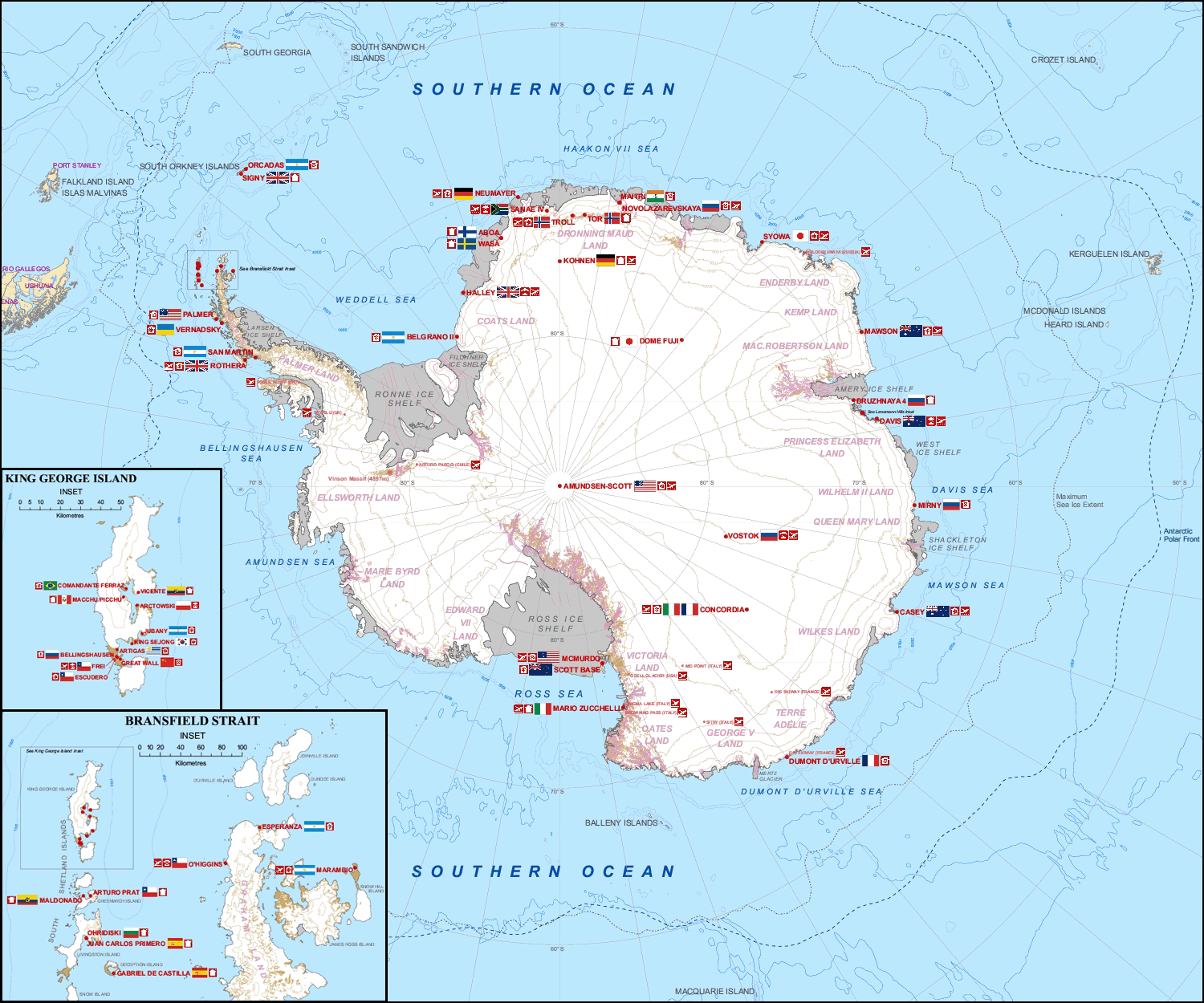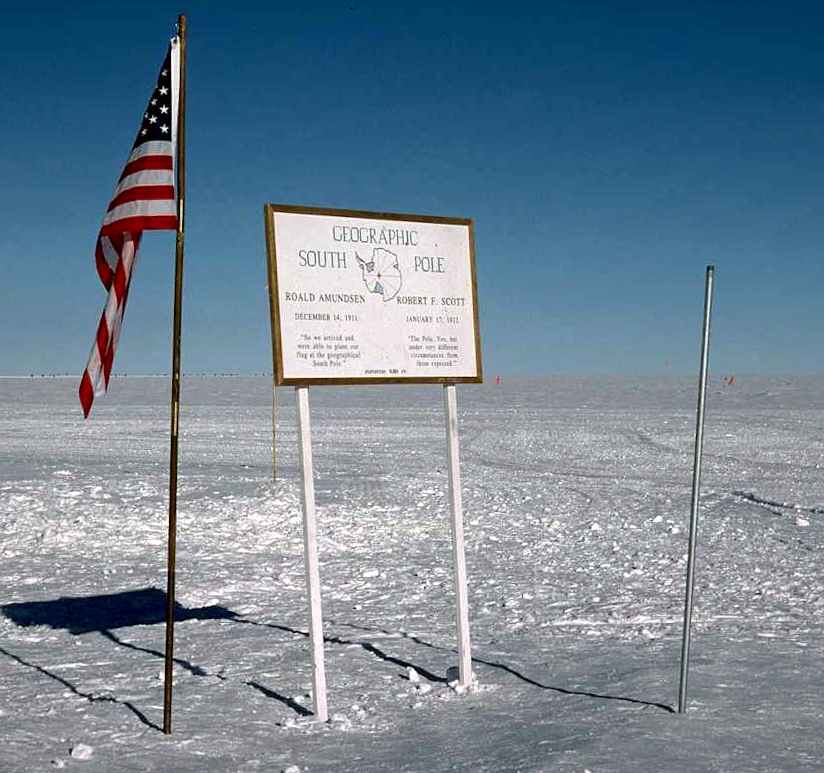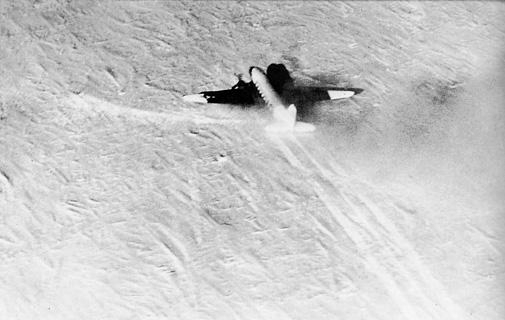|
Little Rockford
Little Rockford was an Antarctica, Antarctic exploration base from December 1958 to January 1965, located on the Ross Ice Shelf, south of the Bay of Whales. Little Rockford was a field camp and weather station along the Little America (exploration base), Little America tractor trail and was located between McMurdo Sound and Byrd Station, 160 miles from Little America. It was named after Rockford, Illinois, the hometown of Admiral George Dufek. Admiral Dufek was in charge of the United States military mission, through the United States Navy, to support research in Antarctica named Operation Deep Freeze, and the first man to land at the South Pole by airplane. Originally, Little Rockford was established near the western edge of the Ross Ice Shelf close to the King Edward VII Peninsula in December 1958. The following year it was relocated to the east edge of Marie Byrd Land. Little Rockford's use was discontinued in January 1965. See also *Research stations in Antarctica#List of res ... [...More Info...] [...Related Items...] OR: [Wikipedia] [Google] [Baidu] |
Research Stations In Antarctica
Multiple governments have set up permanent research stations in Antarctica and these bases are widely distributed. Unlike the drifting ice stations set up in the Arctic, the research stations of the Antarctic are constructed either on rock or on ice that is (for practical purposes) fixed in place. Many of the stations are staffed throughout the year. A total of 42 countries (as of October 2006), all signatories to the Antarctic Treaty, operate seasonal (summer) and year-round research stations on the continent. The population of people performing and supporting scientific research on the continent and nearby islands varies from approximately 4,000 during the summer season to 1,000 during winter (June). In addition to these permanent stations, approximately 30 field camps are established each summer to support specific projects. History First bases During the Heroic Age of Antarctic Exploration in the late 19th century, the first bases on the continent were established. I ... [...More Info...] [...Related Items...] OR: [Wikipedia] [Google] [Baidu] |
South Pole
The South Pole, also known as the Geographic South Pole, Terrestrial South Pole or 90th Parallel South, is one of the two points where Earth's axis of rotation intersects its surface. It is the southernmost point on Earth and lies antipodally on the opposite side of Earth from the North Pole, at a distance of 12,430 miles (20,004 km) in all directions. Situated on the continent of Antarctica, it is the site of the United States Amundsen–Scott South Pole Station, which was established in 1956 and has been permanently staffed since that year. The Geographic South Pole is distinct from the South Magnetic Pole, the position of which is defined based on Earth's magnetic field. The South Pole is at the centre of the Southern Hemisphere. Geography For most purposes, the Geographic South Pole is defined as the southern point of the two points where Earth's axis of rotation intersects its surface (the other being the Geographic North Pole). However, Earth's axis of rota ... [...More Info...] [...Related Items...] OR: [Wikipedia] [Google] [Baidu] |
1965 Disestablishments In Antarctica
Events January–February * January 14 – The Prime Minister of Northern Ireland and the Taoiseach of the Republic of Ireland meet for the first time in 43 years. * January 20 ** Lyndon B. Johnson is Second inauguration of Lyndon B. Johnson, sworn in for a full term as President of the United States. ** Indonesian President Sukarno announces the withdrawal of the Indonesian government from the United Nations. * January 30 – The Death and state funeral of Winston Churchill, state funeral of Sir Winston Churchill takes place in London with the largest assembly of dignitaries in the world until the 2005 funeral of Pope John Paul II. * February 4 – Trofim Lysenko is removed from his post as director of the Institute of Genetics at the Russian Academy of Sciences, Academy of Sciences in the Soviet Union. Lysenkoism, Lysenkoist theories are now treated as pseudoscience. * February 12 ** The African and Malagasy Republic, Malagasy Common Organization ('; OCA ... [...More Info...] [...Related Items...] OR: [Wikipedia] [Google] [Baidu] |
1958 Establishments In Antarctica
Events January * January 1 – The European Economic Community (EEC) comes into being. * January 3 – The West Indies Federation is formed. * January 4 ** Edmund Hillary's Commonwealth Trans-Antarctic Expedition completes the third overland journey to the South Pole, the first to use powered vehicles. ** Sputnik 1 (launched on October 4, 1957) falls to Earth from its orbit, and burns up. * January 13 – Battle of Edchera: The Moroccan Army of Liberation ambushes a Spanish patrol. * January 27 – A Soviet-American executive agreement on cultural, educational and scientific exchanges, also known as the " Lacy–Zarubin Agreement", is signed in Washington, D.C. * January 31 – The first successful American satellite, Explorer 1, is launched into orbit. February * February 1 – Egypt and Syria unite, to form the United Arab Republic. * February 6 – Seven Manchester United F.C., Manchester United footballers are among the 21 people killed in the Munich ... [...More Info...] [...Related Items...] OR: [Wikipedia] [Google] [Baidu] |
Outposts Of The Ross Dependency
''Outposts: Journeys to the surviving relics of the British Empire'' is a book by Simon Winchester. It details his travels to each of the remaining dependencies of the British Empire and was first published in 1985 in Britain by Hodder and Stoughton under the title ''Outposts'' and in the United States by Prentice Hall as ''The Sun Never Sets: Travels to the Remaining Outposts of the British Empire''. It was reprinted in 2003 with a new foreword written to address the changing political climate and attitudes in relation to the British Empire, most importantly concerning the handover of Hong Kong to China and, more generally, the rise of globalism. Publication history *''Outposts: Journeys to the Surviving Relics of the British Empire'' (1985), Hodder & Stoughton *''The Sun Never Sets: Travels to the Remaining Outposts of the British Empire'' (1985), Prentice Hall *''Outposts: Journeys to the Surviving Relics of the British Empire'' revised ed. (2003), Penguin Penguins ... [...More Info...] [...Related Items...] OR: [Wikipedia] [Google] [Baidu] |
Outposts Of Antarctica
''Outposts: Journeys to the surviving relics of the British Empire'' is a book by Simon Winchester. It details his travels to each of the remaining dependencies of the British Empire and was first published in 1985 in Britain by Hodder and Stoughton under the title ''Outposts'' and in the United States by Prentice Hall as ''The Sun Never Sets: Travels to the Remaining Outposts of the British Empire''. It was reprinted in 2003 with a new foreword written to address the changing political climate and attitudes in relation to the British Empire, most importantly concerning the handover of Hong Kong to China and, more generally, the rise of globalism. Publication history *''Outposts: Journeys to the Surviving Relics of the British Empire'' (1985), Hodder & Stoughton *''The Sun Never Sets: Travels to the Remaining Outposts of the British Empire'' (1985), Prentice Hall *''Outposts: Journeys to the Surviving Relics of the British Empire'' revised ed. (2003), Penguin Penguins ( o ... [...More Info...] [...Related Items...] OR: [Wikipedia] [Google] [Baidu] |
Little Rockford Weather Station
Little is a synonym for small size and may refer to: Arts and entertainment * ''Little'' (album), 1990 debut album of Vic Chesnutt * ''Little'' (film), 2019 American comedy film * The Littles, a series of children's novels by American author John Peterson ** ''The Littles'' (TV series), an American animated series based on the novels Places * Little, Kentucky, United States * Little, West Virginia, United States Other uses *Clan Little, a Scottish clan * Little (surname), an English surname * Little (automobile), an American automobile manufactured from 1912 to 1915 * Little, Brown and Company, an American publishing company * USS ''Little'', multiple United States Navy ships See also * * *Little Mountain (other) * Little River (other) *Little Island (other) Little Island can refer to: Geographical areas Australia * Little Island (South Australia) * Little Island (Tasmania) * Little Island (Western Australia) Canada * Little Island (Lake Kagawong), ... [...More Info...] [...Related Items...] OR: [Wikipedia] [Google] [Baidu] |
Marie Byrd Land
Marie Byrd Land (MBL) is an unclaimed region of Antarctica. With an area of , it is the largest unclaimed territory on Earth. It was named after the wife of American naval officer Richard E. Byrd, who explored the region in the early 20th century. The territory lies in West Antarctica, east of the Ross Ice Shelf and the Ross Sea and south of the Pacific Ocean portion of the Southern Ocean, extending eastward approximately to a line between the head of the Ross Ice Shelf and Eights Coast. It stretches between 158°W and 103°24'W. The inclusion of the area between the Rockefeller Plateau and Eights Coast is based upon Byrd's exploration. Overview Because of its remoteness, even by Antarctic standards, most of Marie Byrd Land (the portion east of 150°W) has not been claimed by any sovereign state. It is by far the largest single unclaimed territory on Earth, with an area of (including Eights Coast, immediately east of Marie Byrd Land). In 1939, United States President F ... [...More Info...] [...Related Items...] OR: [Wikipedia] [Google] [Baidu] |
King Edward VII Peninsula
King Edward VII Land or King Edward VII Peninsula is a large, ice-covered peninsula which forms the northwestern extremity of Marie Byrd Land in Antarctica. The peninsula projects into the Ross Sea between Sulzberger Bay and the northeast corner of the Ross Ice Shelf, and forms part of the Ross Dependency. Edward VII Peninsula is defined by the Ross Ice Shelf on the southwest, Okuma Bay on the west, and to the east by Sulzberger Bay and the Saunders Coast, all essentially on the Ross Sea / Southern Ocean in Antarctica. The northwest extremity of the peninsula is Cape Colbeck. Edward VII Peninsula is located at . The western coast is Shirase Coast. In the north and east the Swinburne Ice Shelf is located. Edward VII Peninsula was discovered on 30 January 1902 by the British National Antarctic Expedition (BrNAE) (1901–1904) under Robert Falcon Scott, who named it King Edward VII Land for King Edward VII of the United Kingdom Edward VII (Albert Edward; 9 Novembe ... [...More Info...] [...Related Items...] OR: [Wikipedia] [Google] [Baidu] |
Operation Deep Freeze
Operation Deep Freeze (OpDFrz or ODF) is codename for a series of United States missions to Antarctica, beginning with "Operation Deep Freeze I" in 1955–56, followed by "Operation Deep Freeze II", "Operation Deep Freeze III", and so on. (There was an initial operation before Admiral Richard Byrd proposed 'Deep Freeze'). Given the continuing and constant US presence in Antarctica since that date, "Operation Deep Freeze" has come to be used as a general term for US operations in that continent, and in particular for the regular missions to resupply US Antarctic bases, coordinated by the United States military. Task Force 199 was involved. Prior to International Geophysical Year The U.S. Navy already had a record of earlier exploration in Antarctica. As early as 1839, Captain Charles Wilkes led the first U.S. Naval expedition into Antarctic waters. In 1929, Admiral Richard E. Byrd established a naval base at Little America I, led an expedition to explore further inland, and ... [...More Info...] [...Related Items...] OR: [Wikipedia] [Google] [Baidu] |
Antarctica
Antarctica () is Earth's southernmost and least-populated continent. Situated almost entirely south of the Antarctic Circle and surrounded by the Southern Ocean, it contains the geographic South Pole. Antarctica is the fifth-largest continent, being about 40% larger than Europe, and has an area of . Most of Antarctica is covered by the Antarctic ice sheet, with an average thickness of . Antarctica is, on average, the coldest, driest, and windiest of the continents, and it has the highest average elevation. It is mainly a polar desert, with annual precipitation of over along the coast and far less inland. About 70% of the world's freshwater reserves are frozen in Antarctica, which, if melted, would raise global sea levels by almost . Antarctica holds the record for the lowest measured temperature on Earth, . The coastal regions can reach temperatures over in summer. Native species of animals include mites, nematodes, penguins, seals and tardigrades. Where ve ... [...More Info...] [...Related Items...] OR: [Wikipedia] [Google] [Baidu] |
George Dufek
George John Dufek (10 February 1903, Rockford, Illinois – 10 February 1977, Bethesda, Maryland) was an American naval officer, naval aviator, and polar expert. He served in World War II and the Korean War and in the 1940s and 1950s spent much of his career in the Antarctic, first with Admiral Byrd and later as supervisor of U.S. programs in the South Polar regions. Rear Admiral Dufek was the director of the Mariners' Museum in Newport News, Virginia after his retirement from the Navy in 1959. Background and military career Born in Rockford, Illinois, he joined the Reserve Officer Training Corps (ROTC) at his local high school and was appointed to the U.S. Naval Academy in Annapolis, Maryland in 1921. Upon graduation in 1925 he received his ensign's commission and commenced his career aboard the battleship . He was later assigned to the submarine USS ''S-39'' and was promoted to lieutenant (junior grade) in 1928. In 1932 he entered flight training school at the Naval ... [...More Info...] [...Related Items...] OR: [Wikipedia] [Google] [Baidu] |



.jpg)


